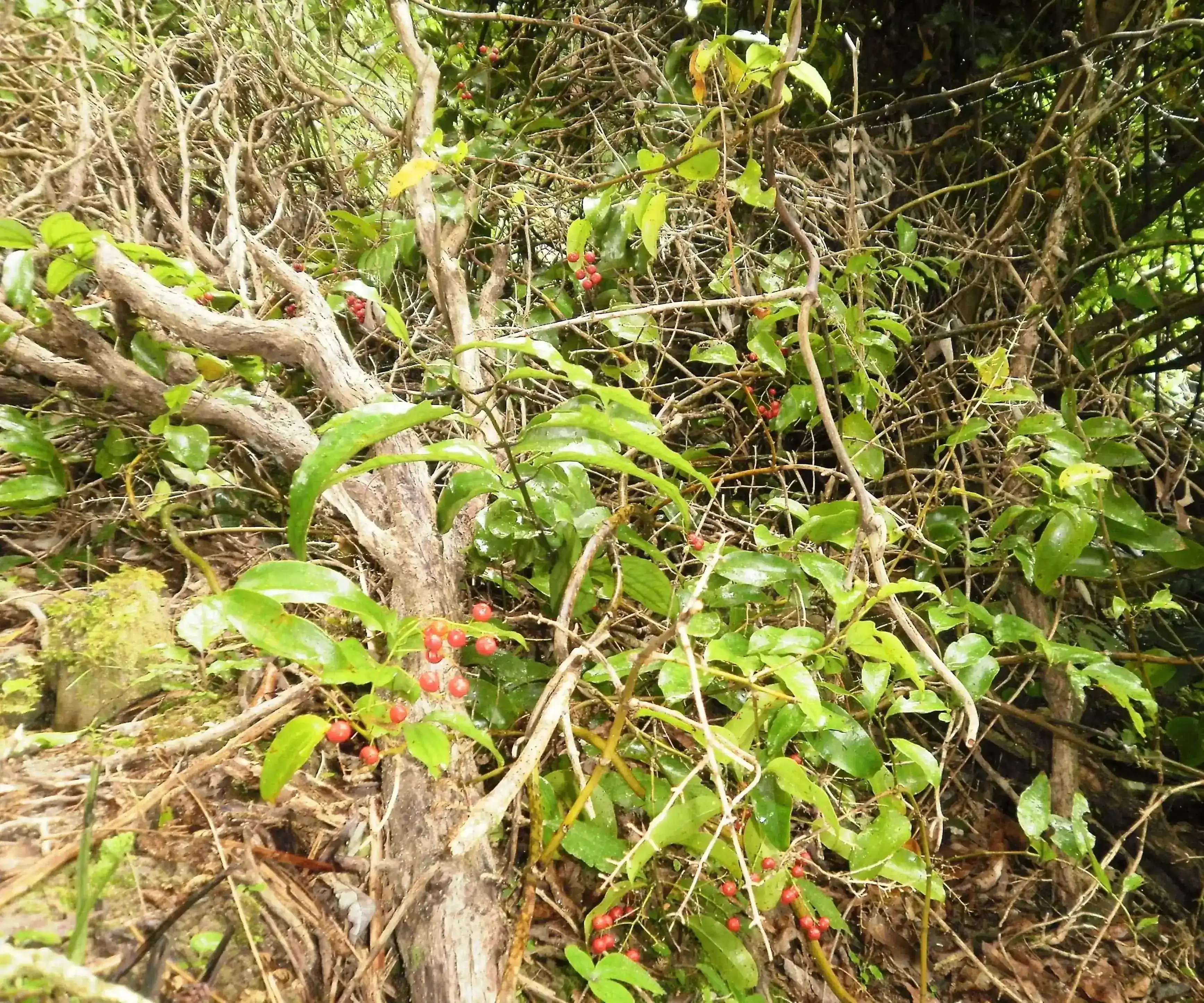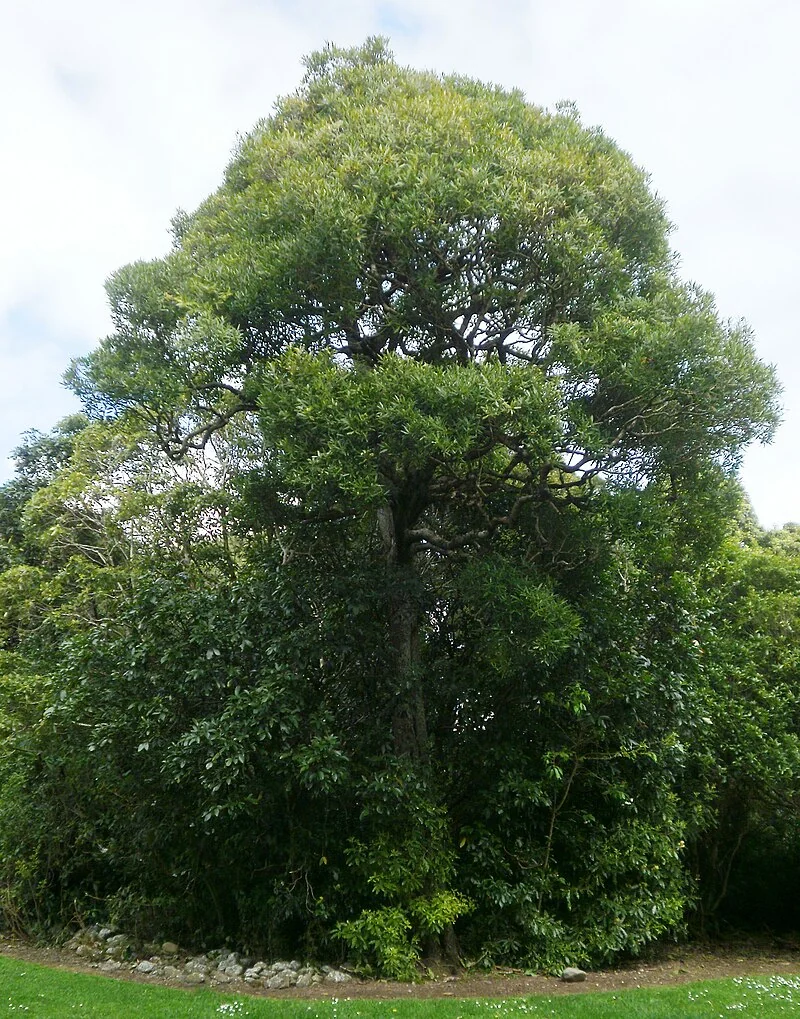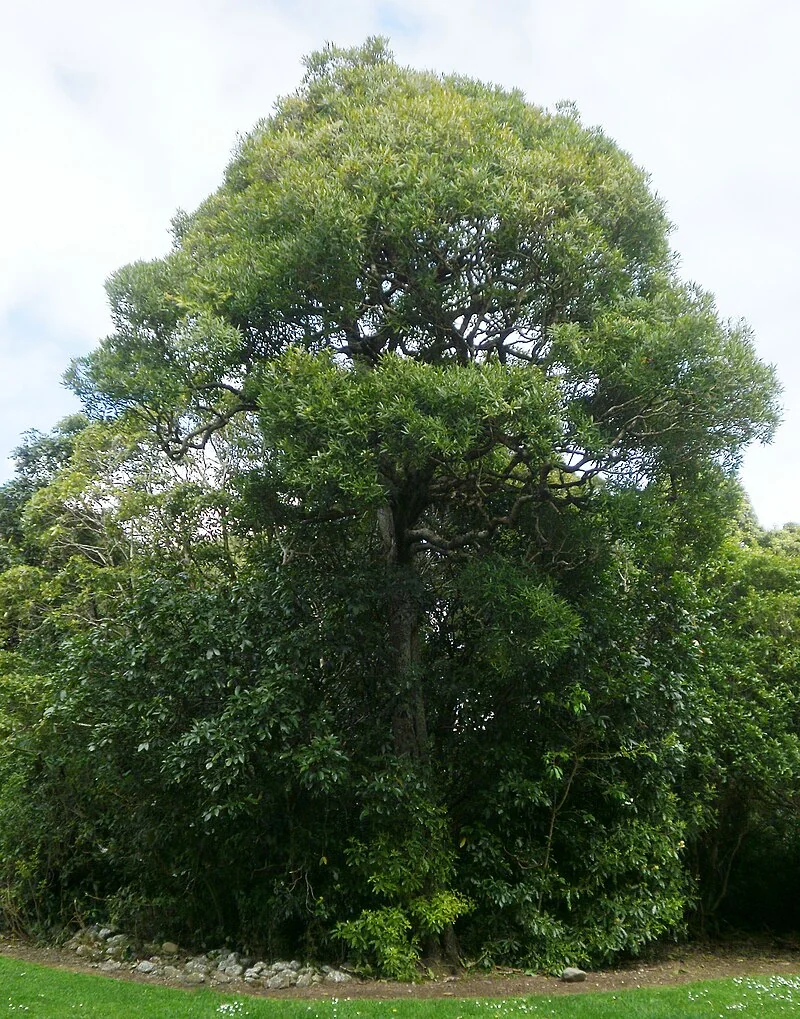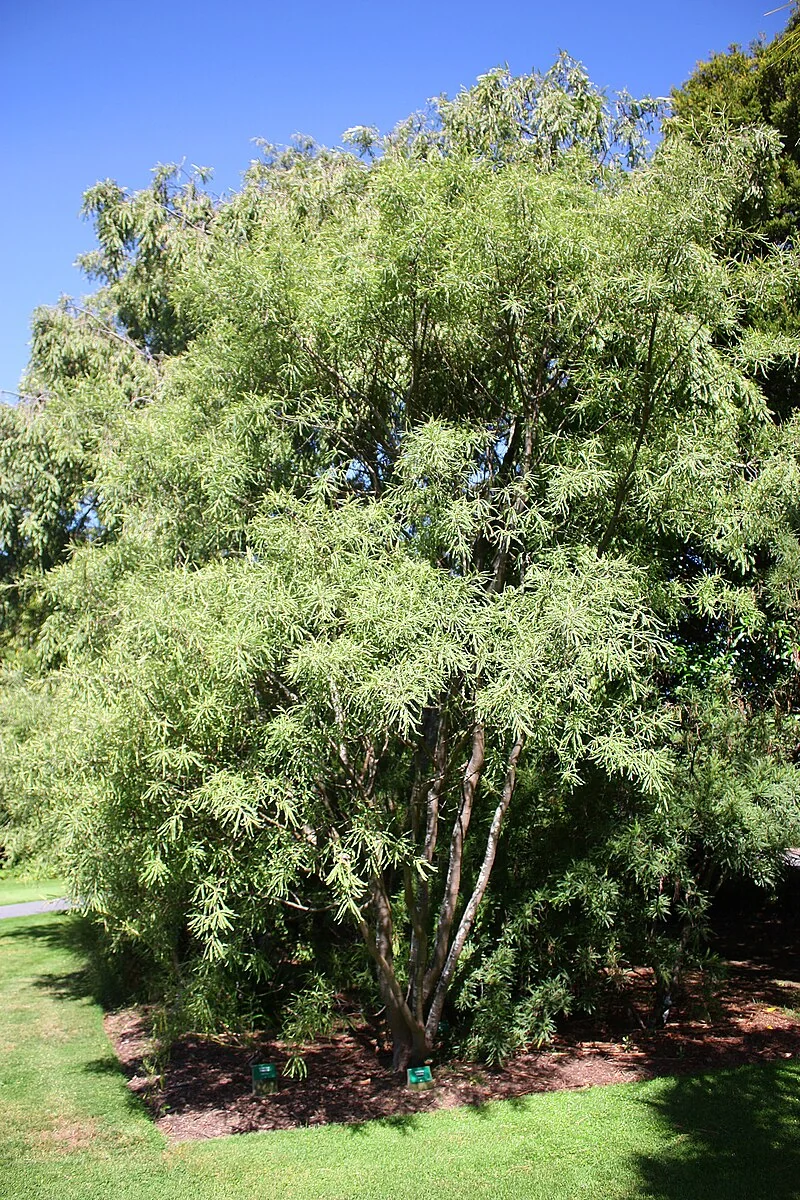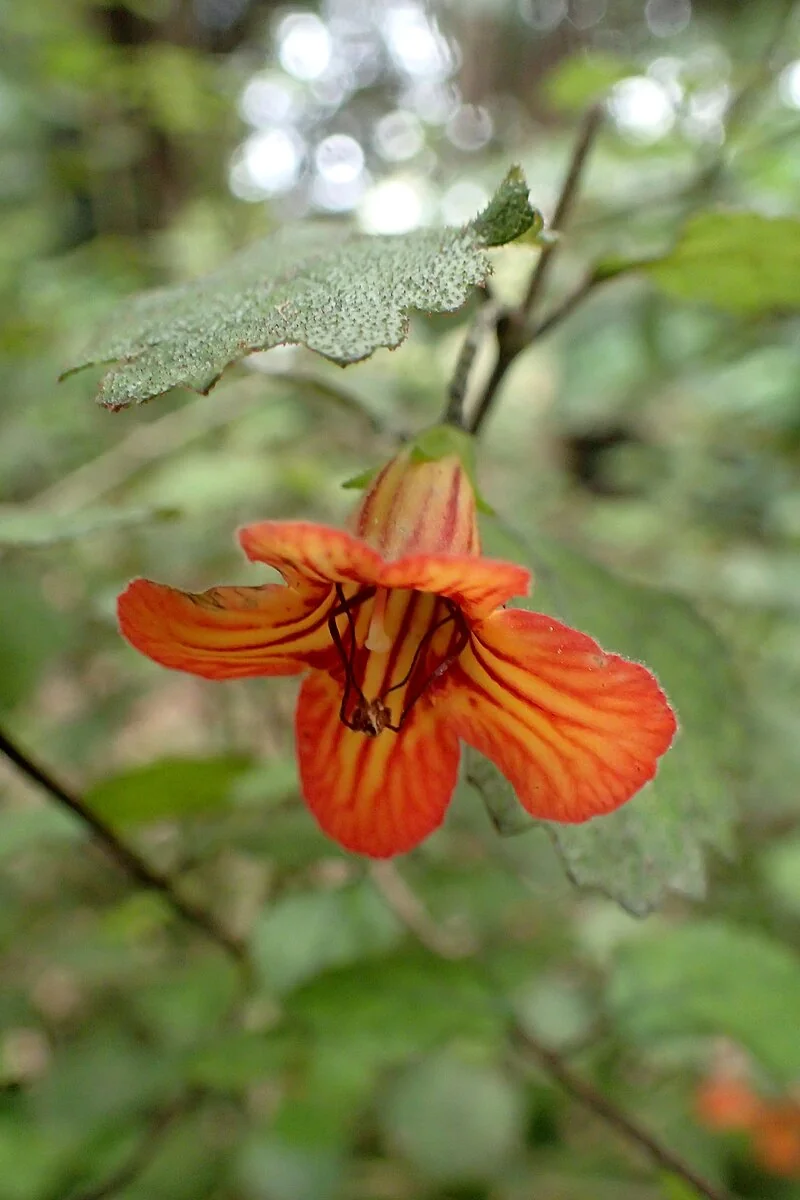
Taurepo
Rhabdothamnus solandri
Introduction
Taurepo (scientific name: Rhabdothamnus solandri) is New Zealand's only member of the gloxinia family and one of our most distinctive native shrubs. This remarkable plant produces stunning orange-red trumpet-shaped flowers with yellow throats, creating a spectacular display in shaded forest understoreys. Endemic to the North Island, it's highly valued by gardeners for its unique tropical appearance and beautiful blooms. Explore more in the native plants index.

Taurepo (Rhabdothamnus solandri) is a native species valued in gardens and restoration for its form and resilience in suitable conditions. Learn more about native shrubs in our native plants guide.
Plant Description
Botanical Features
Taurepo (Rhabdothamnus solandri), also known as New Zealand gloxinia, kaikaiatua, mata, matata, and waiuatua, is a small, bushy shrub endemic to New Zealand's North Island and its offshore islands. It is the sole species in the genus Rhabdothamnus and the only member of the Gesneriaceae family native to New Zealand. This shrub typically grows up to 2 meters tall and features numerous thin, often brittle, grey-brown to grey branches. Its leaves are rounded, thin, and can range from dark green to yellow-green or grey-green, with sparsely stiff hairs and toothed edges. The leaves are arranged in opposite pairs. A distinctive feature is its trumpet-shaped, nodding flowers, which are 20-40 mm long. These flowers are usually orange, but can also be yellow, purple, pink, or brick-red, and are longitudinally striped by 12-20 red or dark orange veins. It flowers year-round, with a peak between October and February. The flowers are primarily pollinated by native New Zealand birds such as the bellbird, tāā, and stitchbird. It is found in various habitats, including forests, near streams, on banks, and particularly on rocky sites like cliff faces. It prefers free-draining, rocky yet fertile sites, especially on limestone karst formations.
Quick Facts
Essential Information
| Scientific Name | Rhabdothamnus solandri |
|---|---|
| Common Name | Taurepo, New Zealand Gloxinia, Mātātā, Waiā-atua, Kaikaiatua |
| Height | Up to 2 meters |
| Leaves | Grey-green, often with brown hairs, rounded, toothed edge. |
| Flowers | Trumpet-shaped, 20-40mm long, colors range from orange, brick-red, yellow, purple, or pink with red/dark orange veins. |
| Flowering Season | Year-round, peaking October-February. |
| Habitat | North Island and offshore islands, coastal to lowland and lower montane areas, rocky sites, gorges, cave entrances. |
| Unique Status | Sole species in genus Rhabdothamnus, only New Zealand native member of Gesneriaceae family. |
| Pollination | Primarily by native New Zealand honeyeaters (bellbird, tāā, stitchbird). |
| Conservation Status | Not Threatened (but faces challenges from introduced pests and lack of effective pollinators). |
| Discovery | First documented by Joseph Banks and Daniel Solander in 1769. |
| Water Needs | Moderate; prefers consistently moist, well-drained soil |
| Light | Partial shade to dappled light; protect from direct sun |
| Spread | 1-2 m |
| Frost Tolerance | Moderate; protect from hard frosts |
| Salt Tolerance | Low; requires protection from salt exposure |
| Growth Rate | Slow to moderate |
| Lifespan | Long |
Climate Best Suited to
Regional climate suitability across major New Zealand cities.
Regional Suitability
| City | Climate Suitability |
|---|---|
| Whangārei | Ideal |
| Auckland | Ideal |
| Hamilton | Ideal |
| Tauranga | Ideal |
| Rotorua | Ideal |
| Gisborne | Ideal |
| New Plymouth | Ideal |
| Napier | Ideal |
| Whanganui | Ideal |
| Palmerston North | Ideal |
| Wellington | Ideal |
| Nelson | Ideal |
| Christchurch | Ideal |
| Dunedin | Ideal |
| Invercargill | Ideal |
Natural Habitat
Taurepo (Rhabdothamnus solandri), also known as New Zealand gloxinia, is a small shrub endemic to New Zealand's North Island and its adjacent offshore islands. It is the sole species in its genus and the only member of the Gesneriaceae family native to New Zealand, highlighting its unique botanical status.
Key Habitats Include:
- Coastal to Lower Montane Areas: Its natural habitat spans coastal to lowland and lower montane areas throughout the North Island, extending from Te Paki (North Cape) south to the Manawatu Gorge, and then disjunctly to areas near Porirua Harbour and Wellington.
- Rocky Sites: Taurepo is primarily a rupestral species, meaning it is associated with rocky sites like cliff faces, gorges, outcrops, and cave entrances, particularly in the lowland karst regions of the western Waikato.
- Forests and Shrubland: While it often grows in forests, it can also extend into shrubland, showcasing its adaptability to various light conditions.
- Inland Areas: It can be found inland in areas with limited frost, such as along the banks of the Waikato River.
Preferred Conditions:
- Moist Woodland Environments: It thrives in moist woodland environments and prefers shaded areas with natural rainfall.
- Free-Draining Soil: It prefers free-draining, rocky yet fertile sites, especially on limestone karst formations.
The presence of Rhabdothamnus solandri in these diverse habitats underscores its ecological importance in contributing to the biodiversity and structural complexity of New Zealand's native forest understories and rocky landscapes.
Plant Conservation
Rhabdothamnus solandri, commonly known as New Zealand gloxinia, taurepo, or matata, is a unique shrub endemic to New Zealand and the sole species in its genus, as well as the only representative of the Gesneriaceae family in the country. While nationally classified as "Not Threatened," its conservation faces challenges, particularly on the New Zealand mainland. The plant is primarily a rupestral (rock-dwelling) species, thriving in coastal to lowland and lower montane forests, often found in limestone formations. Key conservation concerns for Rhabdothamnus solandri include pollination issues, as it relies heavily on native long-billed birds for effective cross-pollination, and introduced species, which can damage the plant by browsing and eating its flowers. Additionally, introduced silvereye birds often consume nectar by piercing the base of the flowers, bypassing the reproductive organs and thus acting as an ineffective pollinator. Despite these challenges, Rhabdothamnus solandri exhibits adaptations to its environment, such as developing bushy forms with protective hairs in windy, salty coastal areas. It can also be cultivated in gardens, where it prefers partial sun, well-drained soil, and protection from harsh sunlight and frost. Planting this species can contribute to supporting local biodiversity and native pollinators.
Growing Requirements
Soil Requirements
Taurepo (Rhabdothamnus solandri) is a rupestral plant, meaning it naturally grows on shallow soils or directly on rock. It thrives in free-draining, rocky, yet fertile sites, often found on limestone karst formations. While it prefers good drainage, it is also noted as being wetland tolerant, suggesting some adaptability to moisture levels.
Light Requirements
Taurepo is adaptable to both sun and shade, though it often performs best in partial shade. It is not typically found in dense forest but thrives on open bluffs or cliff faces where it receives adequate light without being exposed to the harshest sun.
Water Requirements
While it prefers free-draining conditions, Taurepo is tolerant of short periods of dry conditions once established. It is also noted as being wetland tolerant, indicating it can handle varying moisture levels. Consistent moisture is generally beneficial, but excellent drainage is key to prevent waterlogging.
Planting Guide
Establishment
Taurepo (Rhabdothamnus solandri) prefers humus-rich, free-draining soils with consistent moisture and high shade or filtered light. Ideal for sheltered bush gardens and gullies.
- Plant in autumn or spring; avoid hot, dry periods.
- Set the plant at the same depth as in the pot; water to settle soil.
- Mulch well to maintain cool roots; keep mulch away from the stem.
Protect from slugs/snails when young and keep evenly moist through summer.
Ecological Role
Shady Gully Specialist
Taurepo's tubular orange flowers attract a range of invertebrate pollinators in humid gullies, while the shrub's branching habit provides cool, sheltered niches for fern and moss communities.
Understorey Connectivity
By filling shady gaps in gullies, taurepo links fern- and moss-dominated patches, maintaining humid corridors for invertebrates and aiding seedling establishment of shade flora.
Uses and Significance
New Zealand's Unique Gloxinia
- Ecological Role: Taurepo (Rhabdothamnus solandri) plays a crucial ecological role as a food source for native New Zealand honeyeaters. Its trumpet-shaped flowers are specifically adapted for pollination by long-billed birds like the hihi (stitchbird), tāā, tāeke (saddleback), and korimako (bellbird).
- Unique Botanical Status: As the sole species in its genus and the only native New Zealand member of the Gesneriaceae family, Taurepo is a botanical marvel. This monotypic status highlights its evolutionary uniqueness within the country's flora.
- Horticultural Interest: Valued for its exquisite and distinctive flowers, Taurepo is a plant of significant horticultural interest. It can be grown in home gardens, providing year-round color and helping to feed native wildlife, though it may require specific growing conditions.
- Cultural Recognition: In 2019, Taurepo was voted New Zealand's favorite native plant by the NZPCN, a testament to its unique beauty and charm among the public.
- Habitat and Adaptation: This shrub is found in diverse North Island habitats, from coastal to lowland forests, near streams, on rocky slopes, and clinging to cliff faces. Its ability to adapt its form to suit varied landscapes, such as bushing out to protect against salt spray, showcases its resilience.
- Conservation Challenges: While generally "not threatened," Taurepo faces challenges from introduced pests that browse its flowers and leaves, and a decline in its specific native pollinators. Introduced birds like the silvereye can also hinder pollination by piercing flowers for nectar without transferring pollen effectively.
Landscaping Ideas
Gully and Shade Feature
Use taurepo as a focal shrub in humid, shaded bush gardens and alongside water features. Its tubular orange blooms light up dim corners; pair with tree ferns and filmy ferns for a natural gully composition.
Seasonal Care
Taurepo (Rhabdothamnus solandri) is a unique New Zealand native shrub that, once established, requires relatively little attention. Its care can be summarized by its preferred growing conditions and flowering habits, with some seasonal considerations.
Spring
- Flowering Peak: Spring marks a peak flowering period for Taurepo, with its vibrant trumpet-shaped flowers attracting native birds.
- Watering: Ensure consistent moisture, especially for newly planted specimens or during dry spells, to support vigorous growth and flowering.
- Pest Monitoring: Keep an eye out for introduced pests that might browse on flowers and leaves.
Summer
- Continued Flowering: Taurepo continues to flower throughout the summer, providing a continuous nectar source.
- Watering: Maintain consistent moisture, particularly during warmer, drier periods, to support the ongoing flowering and growth.
Autumn
- Reduced Growth: As temperatures cool, the plant's growth rate may slow.
- Watering: Reduce watering frequency, allowing the soil to dry out slightly between waterings.
Winter
- Frost Protection: Taurepo can tolerate moderate frost once established. In frost-prone areas, it benefits from the protection of a canopy or a sheltered location. Young plants may require more significant protection.
- Watering: Water sparingly, only when the soil is dry, as the plant is less active during colder months.
Pruning
Techniques and Timing
Taurepo (Rhabdothamnus solandri) is a naturally bushy shrub that generally requires minimal pruning. Pruning is primarily undertaken to maintain its shape, manage its size, or remove any unhealthy growth.
- Maintenance Pruning: Regularly inspect the shrub and remove any dead, diseased, or damaged branches. This can be done at any time of year to maintain plant health and appearance.
- Shaping and Size Control: Taurepo can be trimmed as necessary to maintain a desired shape or to keep it within a specific size. Light pruning can encourage a denser, more compact habit.
- Timing: If more significant shaping or size reduction is required, it is generally best done after the main flowering period, or in late winter/early spring before new growth begins.
- Avoid Over-Pruning: While it responds well to pruning, avoid cutting back too severely into old, woody stems unless rejuvenation is specifically desired.
How to Grow Taurepo
Taurepo (Rhabdothamnus solandri), New Zealand's only member of the Gesneriaceae family, is a distinctive native shrub known for its vibrant, trumpet-shaped flowers. This unique plant is highly valued for its ornamental appeal and its ecological role as a nectar source for native birds. While generally robust, successful cultivation and propagation require attention to its specific needs, mimicking its natural habitat in shaded forest understoreys and rocky sites. Understanding its propagation methods is key to successfully establishing this beautiful native.
From Seed
Taurepo can be readily propagated from fresh seeds. Collect the small seeds from the ripe capsules when they are mature, typically after the main flowering period. Sow the seeds promptly in a well-drained seed-raising mix, lightly covering them with fine medium. Germination is generally easy and reliable without special pretreatment, often occurring within a few weeks under optimal conditions. Maintain consistent moisture in the seed tray and keep it in a sheltered position with bright, indirect light. Once seedlings have developed a few true leaves and are stable, carefully prick them out into individual small pots, minimizing root disturbance. Grow them on in a sheltered environment with steady moisture before gradually hardening them off for planting out.
From Cuttings
Propagation from semi-hardwood cuttings is also possible, though success rates can be variable. Take 10-15 cm cuttings from healthy, current season's growth, ideally in summer. Remove the lower leaves and dip the cut end in a rooting hormone to encourage root development. Insert the cuttings into a well-drained cutting mix (e.g., sand and perlite), maintaining good humidity around the cuttings, perhaps under a plastic dome or in a propagator. Keep the cuttings in bright, indirect light. Rooting can be slow and may take several months. This method is generally more successful for experienced propagators or in specialized nursery settings with controlled environmental conditions.
Pests and Diseases
Challenges to a Unique Native
Taurepo (Rhabdothamnus solandri) while generally robust, faces specific challenges primarily from introduced pests and the decline of its native pollinators, rather than widespread diseases.
- Introduced Pests: Introduced pest species pose a significant threat by browsing on the flowers and leaves of Taurepo. Effective pest control is crucial for the plant's survival and regeneration, especially in areas where its native habitat is under pressure.
- Pollinator Decline: A major challenge is the decline of its native long-billed pollinators, suchs as the tāā, tāeke (saddleback), korimako (bellbird), and hāhā (stitchbird). These birds are essential for the successful reproduction of Taurepo.
- Ineffective Pollination: Introduced birds like the silvereye (waxeye) often consume nectar by piercing the base of the flowers, bypassing the anther and stigma. This means they do not effectively pollinate the plant, further impacting its reproductive success.
- Diseases: Specific diseases directly affecting Taurepo are not widely documented. Maintaining good growing conditions, including appropriate light, well-drained soil, and good air circulation, helps to ensure the plant's overall health and resilience against general plant ailments.
Cultural Significance
Rhabdothamnus solandri, also known as New Zealand gloxinia, holds cultural significance primarily due to its unique status as an endemic New Zealand plant and its connection to Māori language and natural history. The plant is known by several Māori names, including taurepo, kaikaiatua, mata, matata, and waiuatua. It is the sole member of the genus Rhabdothamnus and the only representative of the Gesneriaceae family native to New Zealand (Aotearoa), making it a distinctive part of the country's flora. Rhabdothamnus solandri was first documented by Joseph Banks and Daniel Solander during Captain Cook's initial voyage to New Zealand in 1769, with its scientific name, solandri, honoring Daniel Solander. Its trumpet-shaped flowers are specifically adapted for pollination by native long-billed honeyeaters such as the hihi (stitchbird), tieke (saddleback), bellbird, and tūī. In 2019, Taurepo was voted New Zealand's favorite native plant by the NZPCN, a testament to its unique beauty and charm among the public.
Bonus Tip
Site taurepo where humidity stays high: close to water features or in sheltered gullies. Avoid lime; a leaf-mould rich, slightly acidic soil keeps foliage pristine.


